A spinning project is a good activity for long pandemic days at home. I figured out how to download audio books on my phone using an app called OverDrive, so I hardly notice the time going by while listening and spinning. I had two ounces of a “braid” of 50% silk /50% yak roving that I bought at a fiber fair. It was $40…what was I thinking.
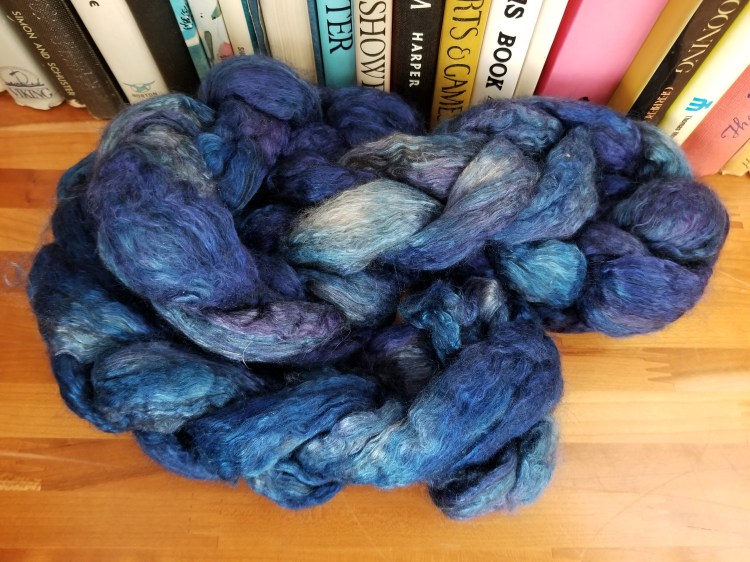
In order to make the expensive fiber go farther, and be easier to spin, I found two ounces of some shades of blue wool in my stash to blend with the silk/yak.

Almost all of the yarn I spin comes out about the same thickness. My earliest attempts at spinning produced very bulky yarn, partly because that is what I wanted at the time. But also because I did not understand how the end result would be thicker after plying two singles together and then washing it. Over the years I have spun thinner yarn, closer to worsted or aran weight, but I am still always surprised when it comes out a bit thicker than I was expecting.
The spinning wheel has adjustments and parts for making thicker or thinner yarn. I have trouble wrapping my head around how all the components work together to end up with yarn on the bobbin. Trying to explain it would be an entire blog post, and I am not sure I can even do it adequately. In a nutshell, the settings for thinner yarn make the wheel go around more times per each time you peddle, adding more twist. Generally thicker yarn needs less twist, and thinner yarn needs more twist. In the entire time I have owned my Lendrum spinning wheel I have always used the same settings for average yarn (not super thin, not super thick art yarn).
For this current project I decided to try spinning thinner yarn than than I have made before, using one of the settings designed for that. It would be a healthy brain exercise for me, and hopefully result in yarn suited for a weaving a scarf. The first step was dividing up the wool roving into groups for blending.

After carding the different blues of wool together into batts, I divided up the silk/yak to blend in with it.


The silk/yak “rope” was rolled up tight, so I opened it out into a wider flatter thinner shape.
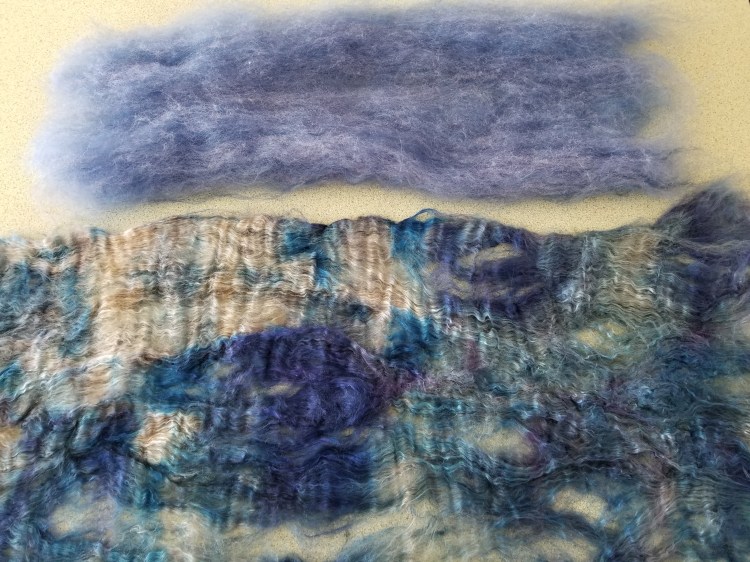
In order to blend the very different fibers together, I took each batt of the wool, and each section of the silk/yak and peeled them apart into smaller pieces. Feeding them into the drum carder in layers would result in a more thorough blend.
I peeled, divided, layered and carded all the fiber into batts. After this first pass of combining the silk/yak with the wool you could still see the layers of each type of fiber.

The last step was to peel the batts up into narrower sections lengthwise, flatten them out, and run them through the drum carder again for a more complete blend.
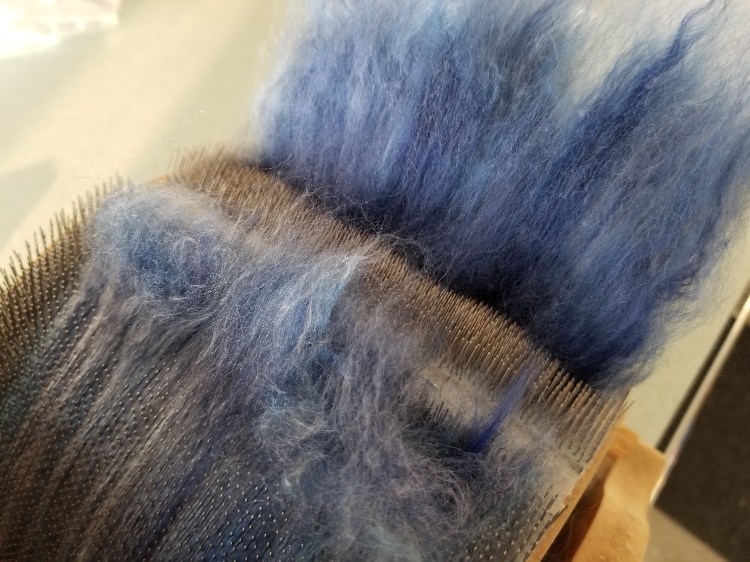
Finally the batts were ready for spinning.
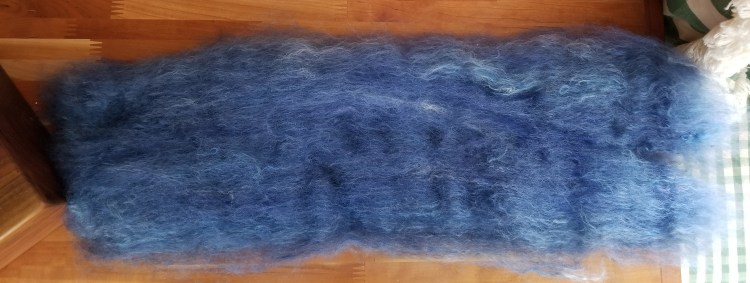
After I finished spinning, plying, and then winding the yarn into a skein, I gently washed it using a bar of wool wash I bought at Tangles to Treasures in Fergus Falls. This is a gentle soap for washing wool fabric, yarn or clothing, custom made by a local craftsperson.
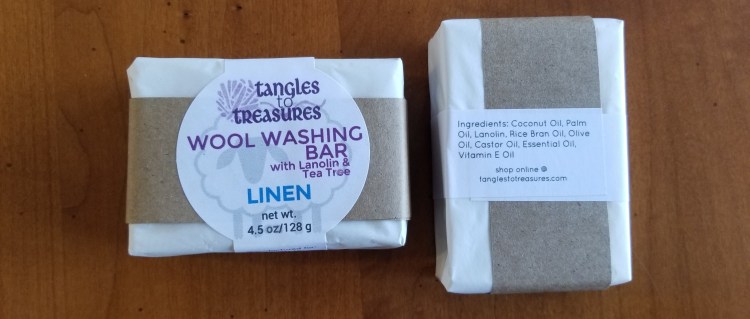
You can see my final result below, after washing. Around 270 yards, weighing 158 grams or 5.6 ounces. A little bit thinner than my default yarn.
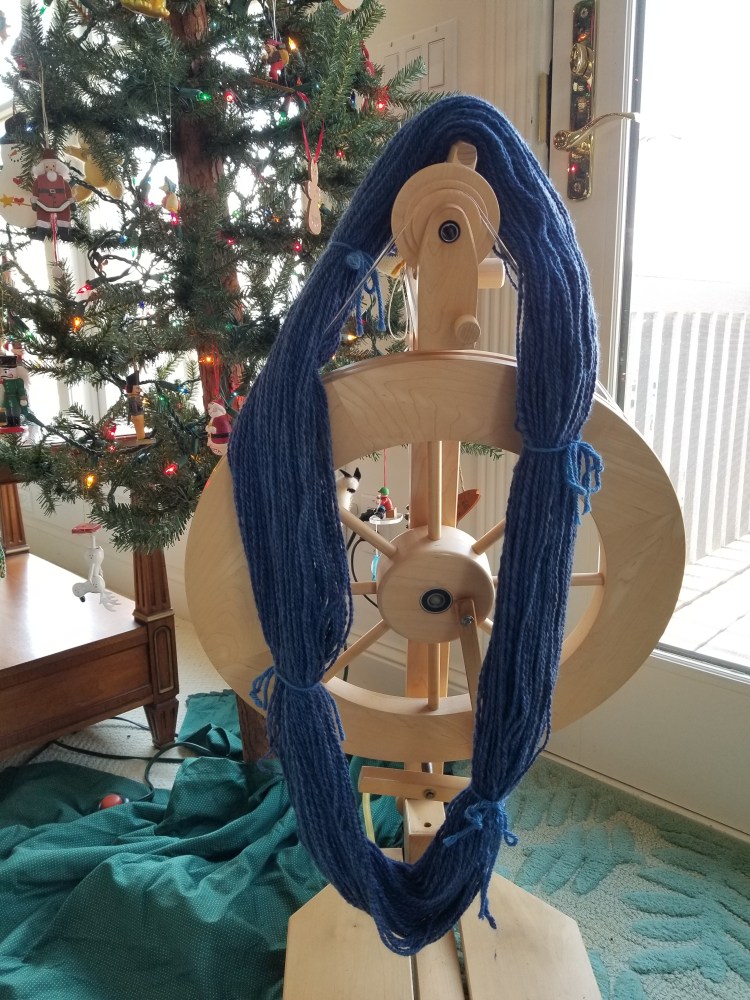


I won’t be selling this yarn. The cost of the materials and time spent in creating it are too high in relation to what I could sell it for. I will use it myself for a woven scarf. Watch for a blog post about that, later in the winter.


Beautiful! the color of your labor-intensive scarf will suit you well! 💙. Merry Christmas, Meg! At this time last year we were making plans for your visit at our CrowsNest. What a year! xoxo
LikeLiked by 2 people
Yes what a year! We are grateful we got to spend some time at your lovely home before everything started to shut down. Love to you and your family!
LikeLiked by 1 person
Super interesting and informational. I love how you show each step. Where you satisfied with the experiment of changing settings on the spinning wheel for thinner yarn? Do you think you could spin thinner yet? Why do you wash the finished skein of yarn? Love the color, that will be a very pretty scarf.
LikeLiked by 1 person
Yes, I was satisfied with the way the setting for thinner yarn worked out. And yes, I think I could spin even thinner yarn. I just have to be very intentional about it. Washing is necessary to “set the twist”, like when carefully ironing wool fabric.
LikeLike
So interesting! I love seeing the process. Thank you.
LikeLiked by 1 person
Thank you!
LikeLike
Beautiful!
LikeLiked by 1 person
Thank you!
LikeLike
What a beautiful shade of blue. I look forward to seeing the finished product.
LikeLiked by 1 person